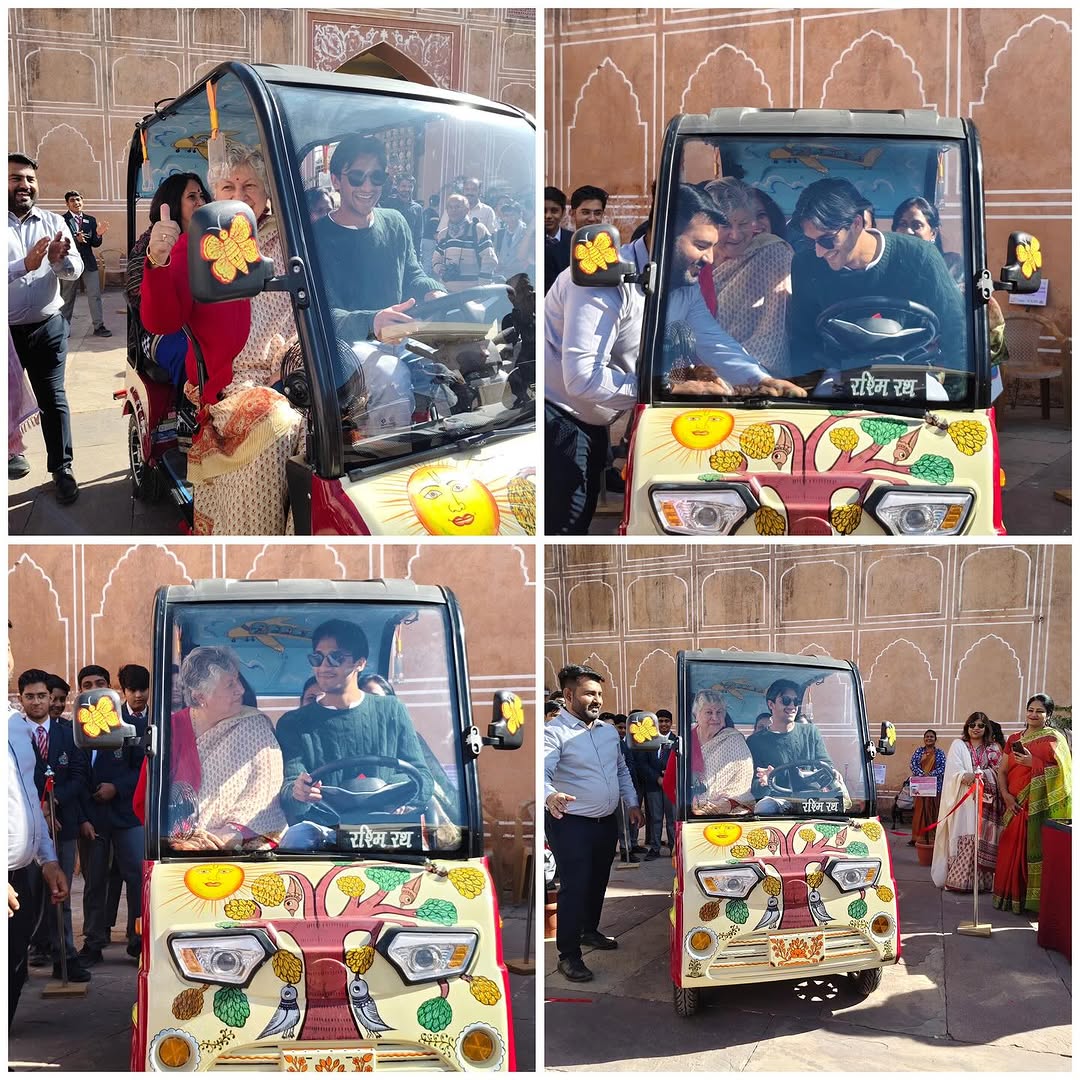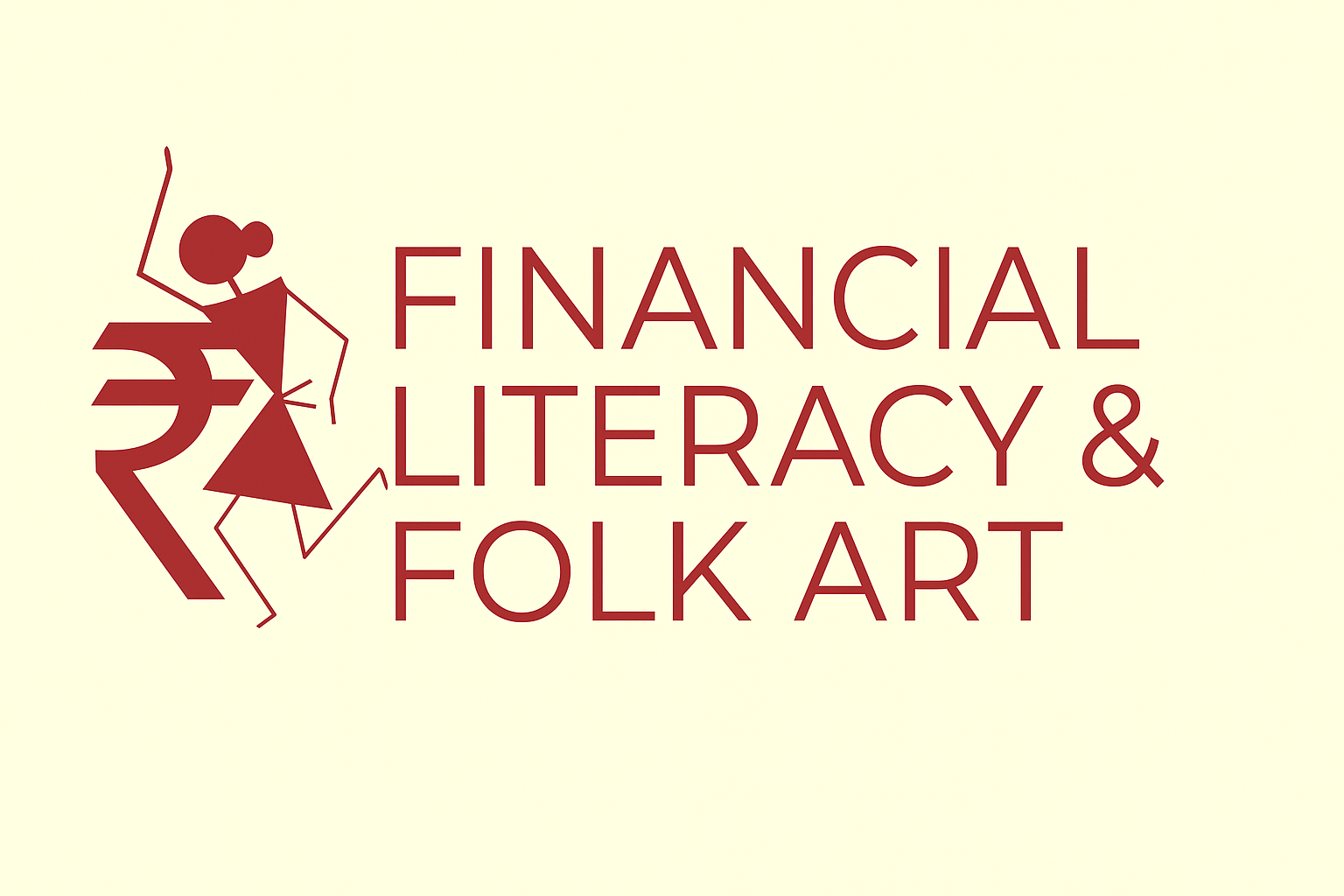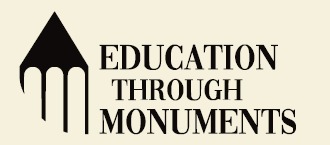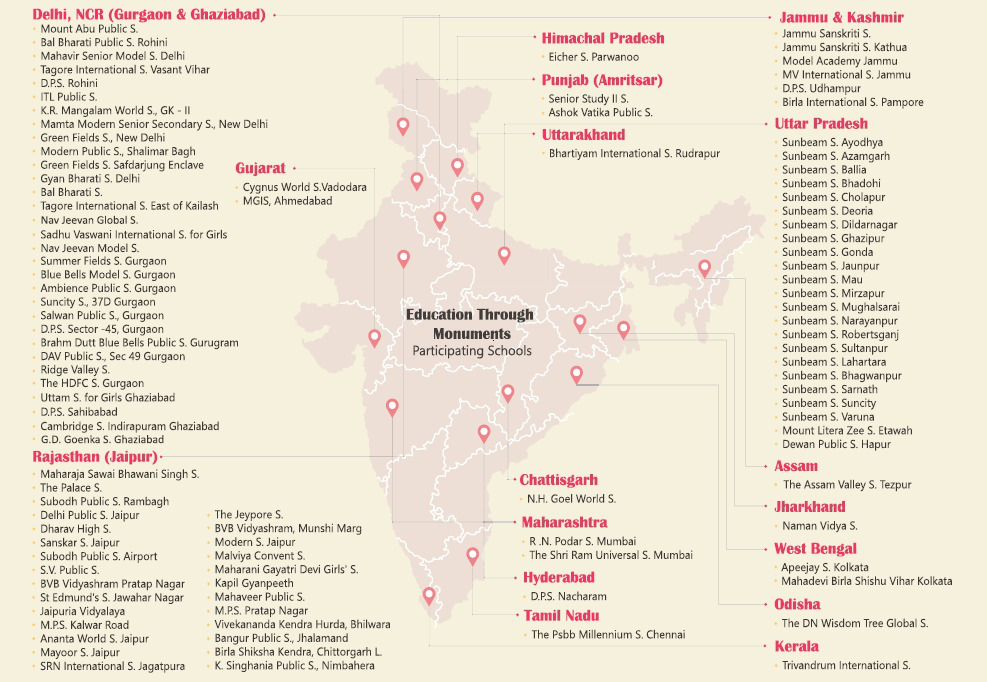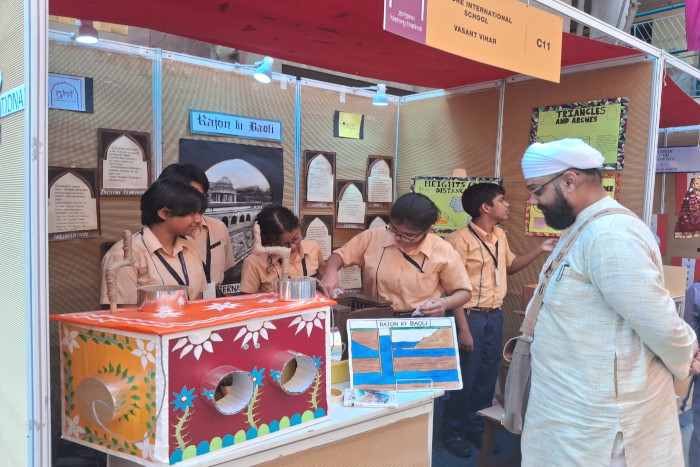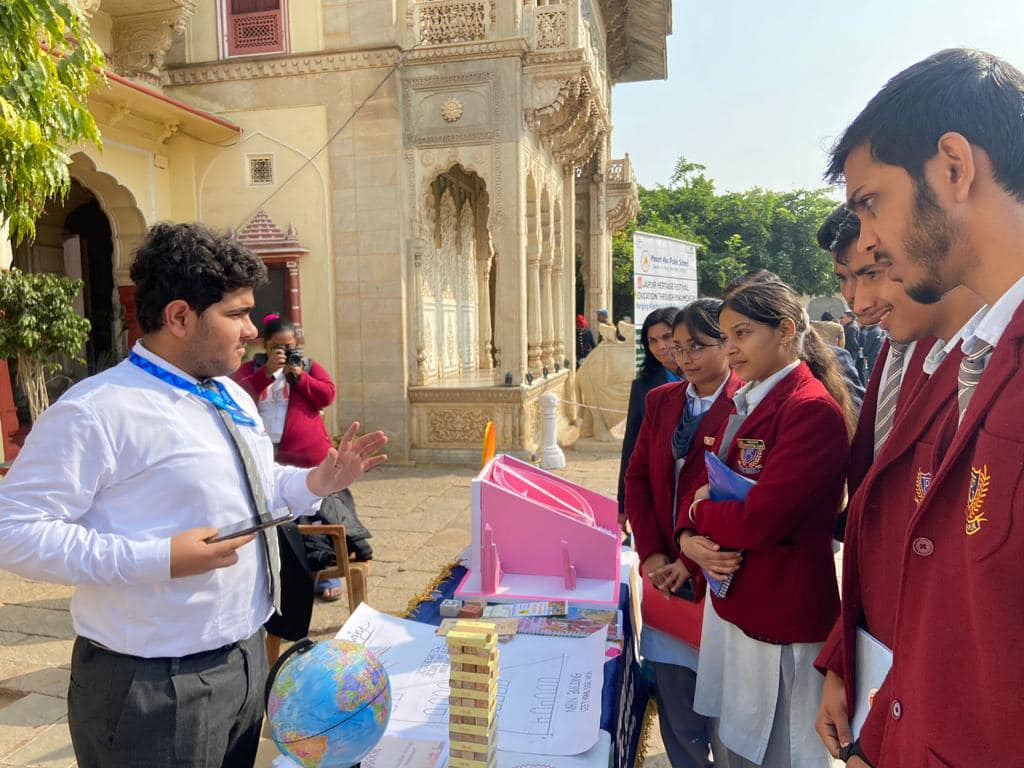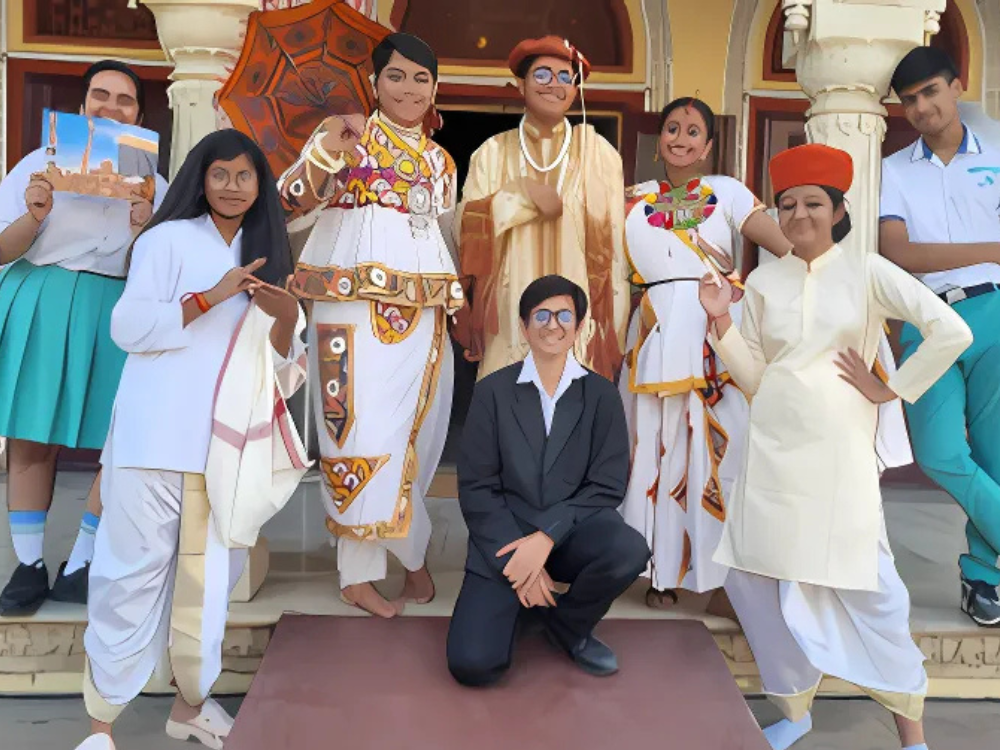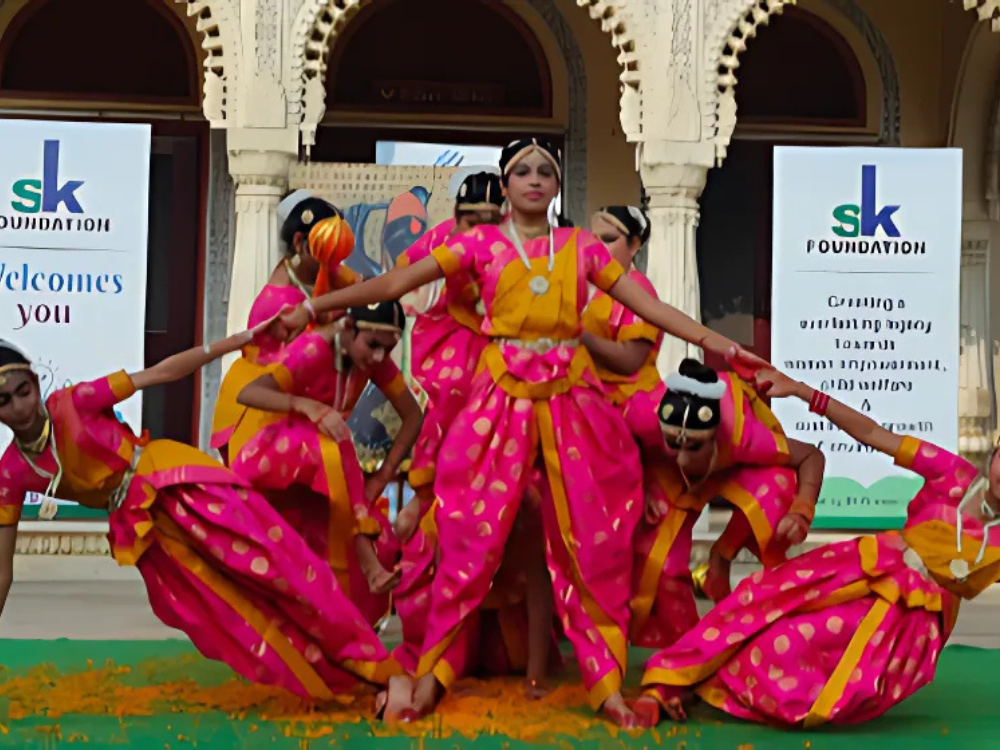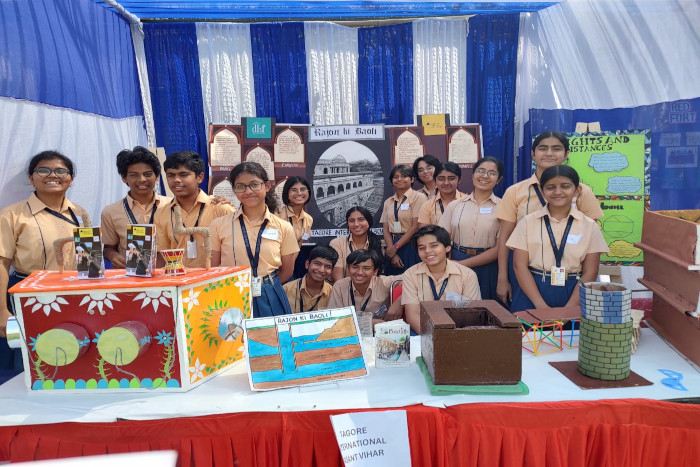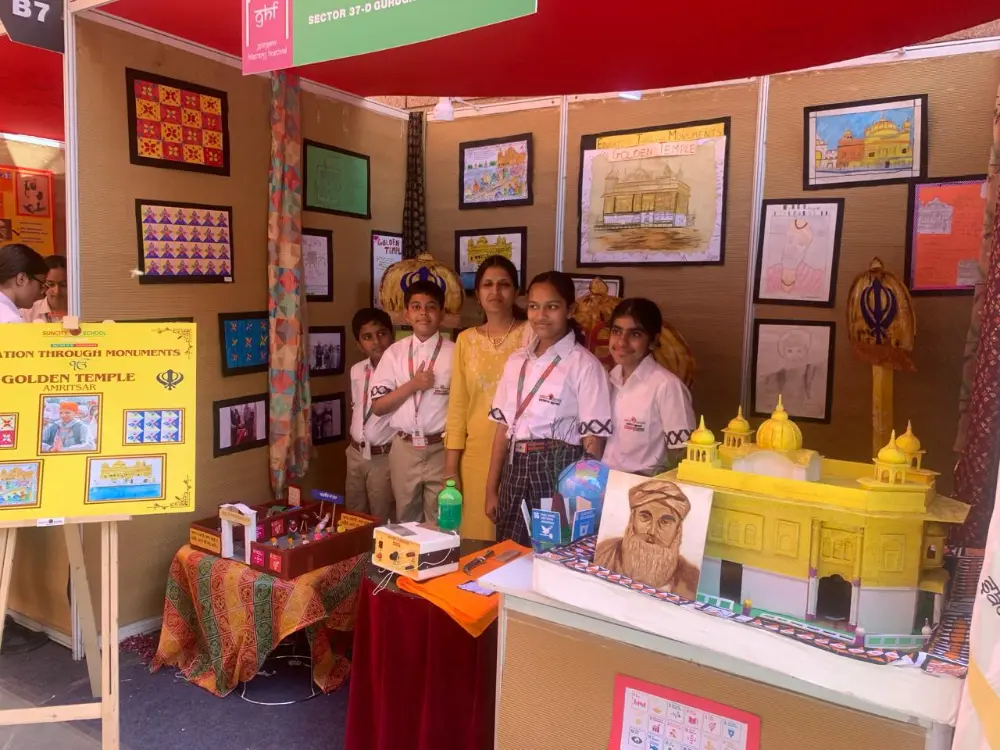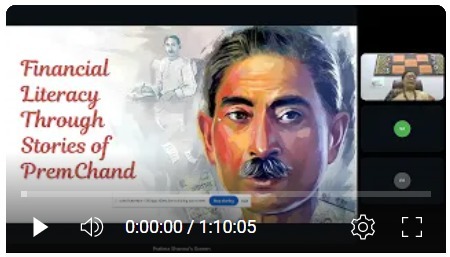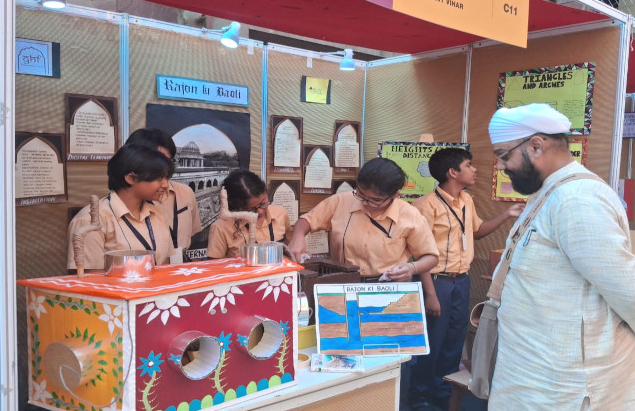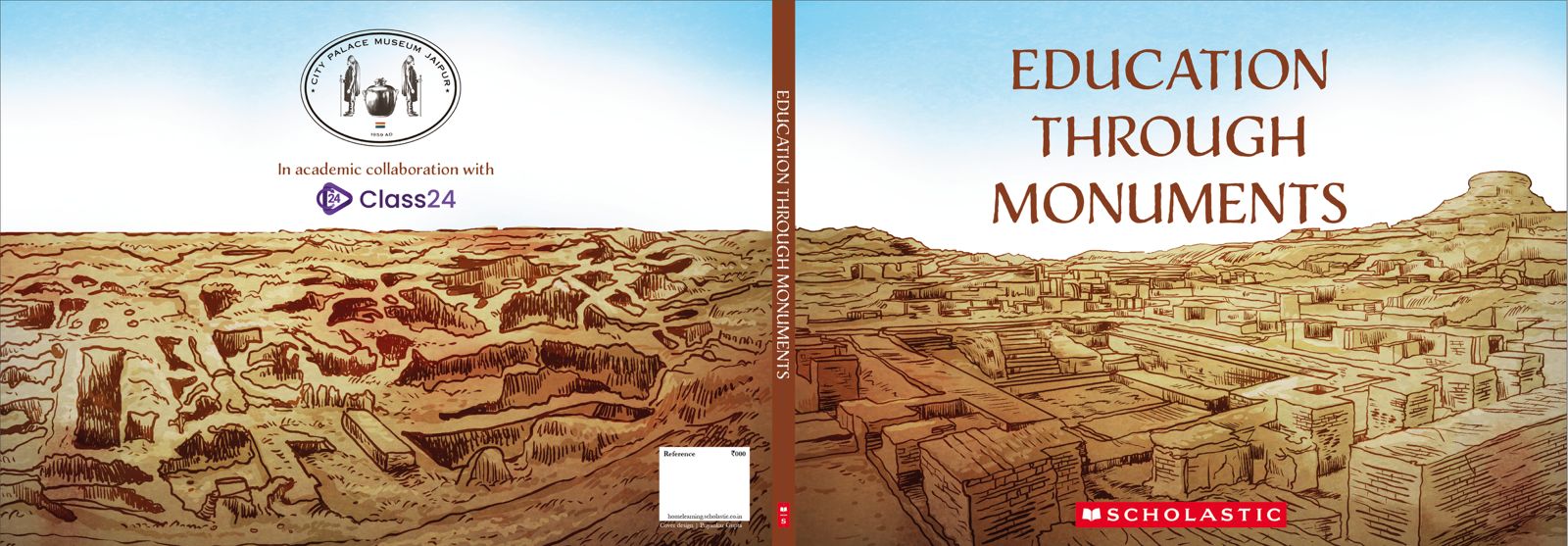Financial Literacy through Folk Art:
- Number of schools participated: More than 180.
- Green Fields School, Maharaja Sawai Bhawani Singh School, Jammu Sanskriti School, Cygnus World School, DAV etc.
- 14 online training sessions conducted, attended by more than 10,000 teachers across India in over 200 schools.
- Financial Literacy Books being made for Class 1 to 10 to enhance financial and investment awareness among the students.
Blending Tradition with Modern Financial Education
The Financial Literacy and Folk Arts project is a one-of-a-kind initiative that integrates financial literacy into education through the timeless charm of popular folk tales. Stories from the Panchatantra, Jataka tales, Aesop’s fables, Vikram & Betal, Akbar-Birbal, Sheikh Chilli, Mulla Nasruddin, Tenali Rama, and the works of literary legends like Munshi Premchand come alive through various folk arts of India
This project goes beyond storytelling by also fostering entrepreneurship through the incubation of business plans enabling students to explore practical applications of financial skills.
Aligned with the National Education Policy 2020
In line with the vision of the National Education Policy (NEP) 2020, this program emphasizes key financial skills such as:
- Budgeting
- Saving
- Differentiating between needs and wants
Empowering Young Minds
Targeting primary and secondary grade students the project aims to introduce financial literacy at an early age, helping them:
- Navigate their financial futures responsibly
- Develop an awareness of potential frauds and scams
- Grow into financially savvy individuals
Objectives of Financial Literacy Through Folk Art
Empowering Students with Financial Wisdom Through Stories and Ar
1. Understanding Financial Basics
Introduce fundamental financial concepts like budgeting, saving, investment, and interest through relatable folk tales, making them easy to grasp and apply in daily life.
2. Distinguishing Needs and Wants
Teach students to analyze scenarios in folk tales to differentiate between needs and wants helping them make smarter, more informed financial decisions.
3. Appreciating the Value of Saving
Inspire students to value saving and investing by exploring narratives that showcase the long-term benefits of financial foresight, including concepts like compound interest.
4. Learning from Characters’ Decisions
Evaluate the successes and failures of characters in folk tales to impart critical lessons on responsible financial behavior.
5. Expressing Financial Concepts Through Art
Encourage students to creatively express financial ideas through folk art forms, fostering a deeper understanding of concepts via artistic interpretation and collaboration
6. Building Critical Thinking Skills
Engage students in discussions and activities that promote problem-solving and critical thinkingby presenting hypothetical financial dilemmas based on folk tales.
7. Exploring Cultural Values
Highlight how cultural values and practicesdepicted in folk tales influence financial behavior and decision-making, extending these lessons to their families and communities.
8. Promoting Ethical Financial Practices
Reflect on the ethical aspects of financial decisions, teaching students the importance of honesty, integrity, and social responsibility through folk narratives.
9. Connecting Heritage with Modern Learning
Foster an appreciation for the rich heritage of folk tales and classical Indian literature while linking their wisdom to contemporary financial concepts
10. Instilling Core Values
Develop studentspersonal growth and financial literacyby instilling core values alongside practical financial skills, promotingethical financial practicesandresponsible money management.
Why Financial Literacy Through Folk Art?
The National Education Policy (NEP) 2020 identifies financial literacy as a critical component for fostering multiple-skill formation among learners. With the rapid pace of technological advancements, today's younger generation faces increased exposure to financial risks making it essential to integrate financial education into the school curriculum.
In line with the National Education Policy (NEP) 2020, this initiative emphasizes values-based education while nurturing practical skills like wealth management and fraud prevention. By combining tradition with modern educational needs, the program fosters early financial literacy in primary and secondary school students, empowering them to become financially responsible individuals.
- Interactive Learning:Blends storytelling with practical lessons for better understanding.
- Cultural Connection:Preserves the essence of folk art while imparting essential life skills.
- Real-Life Impact:Builds a strong foundation for financial decision-making from an early age.




